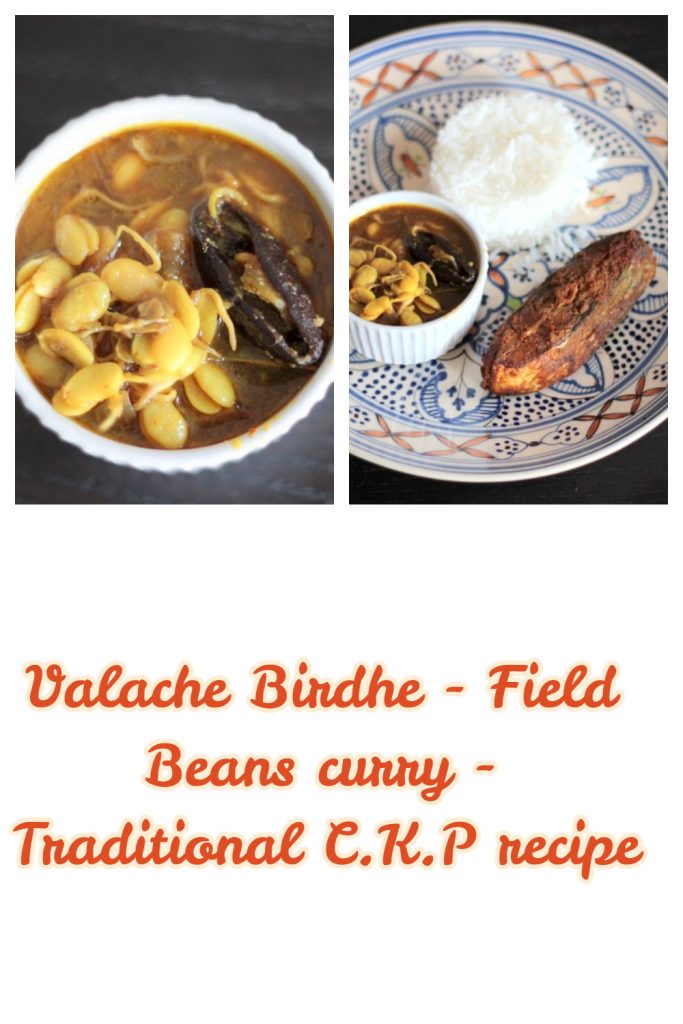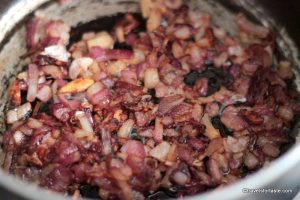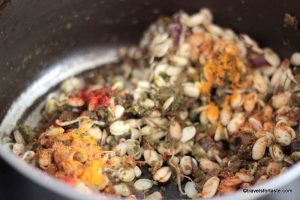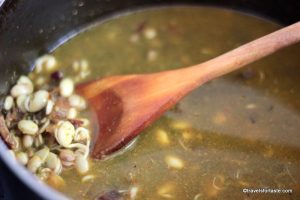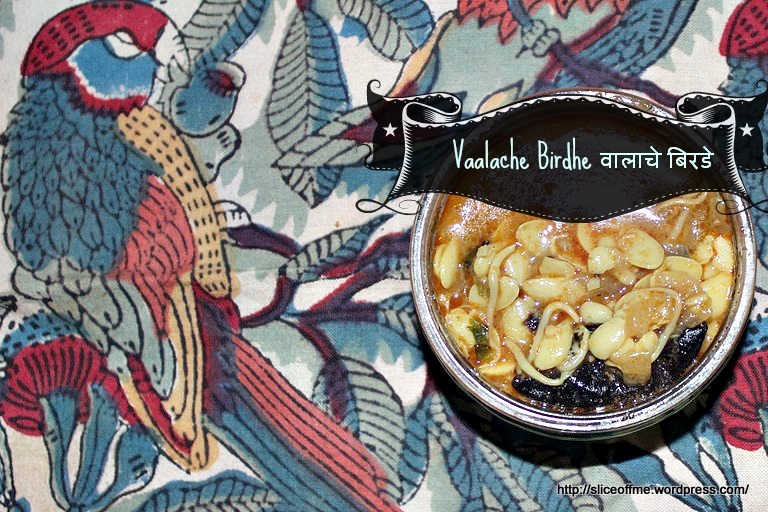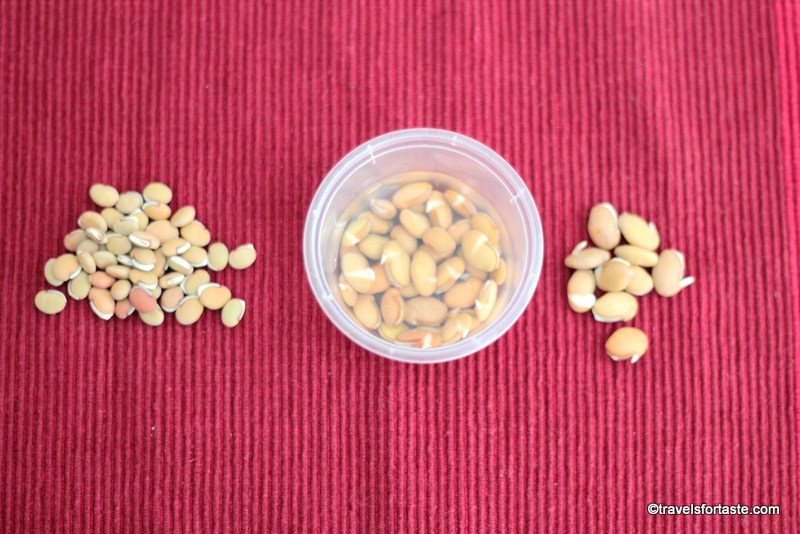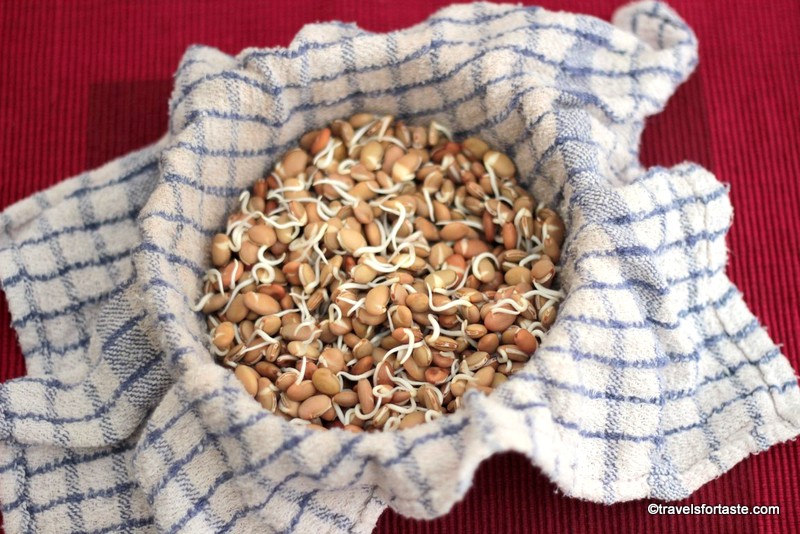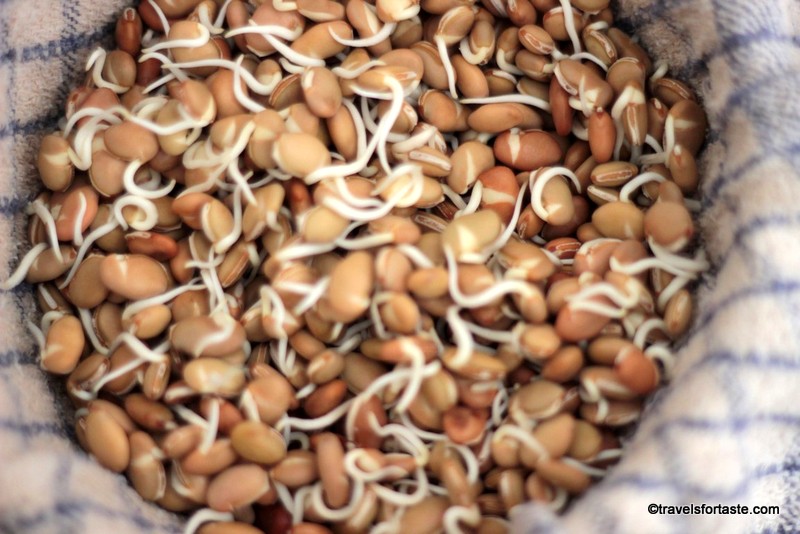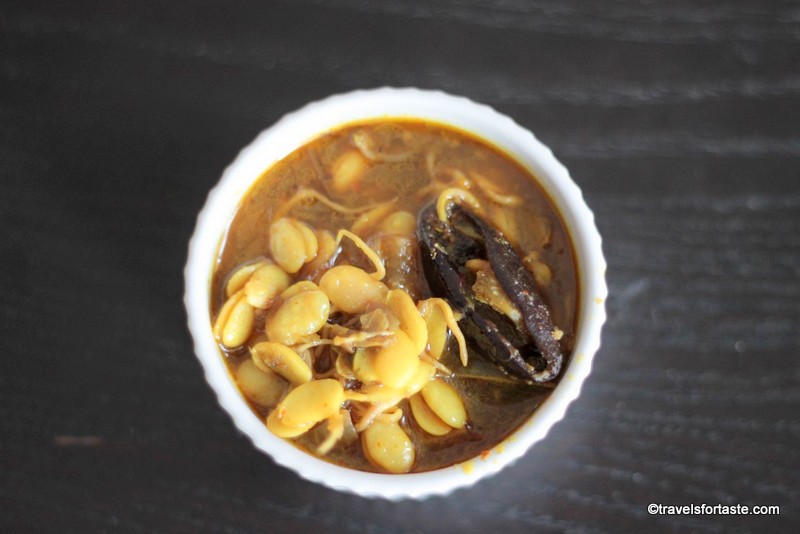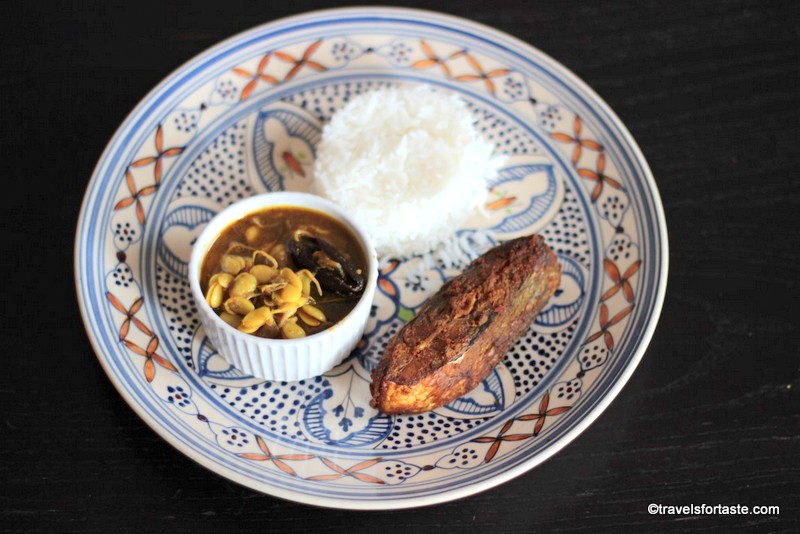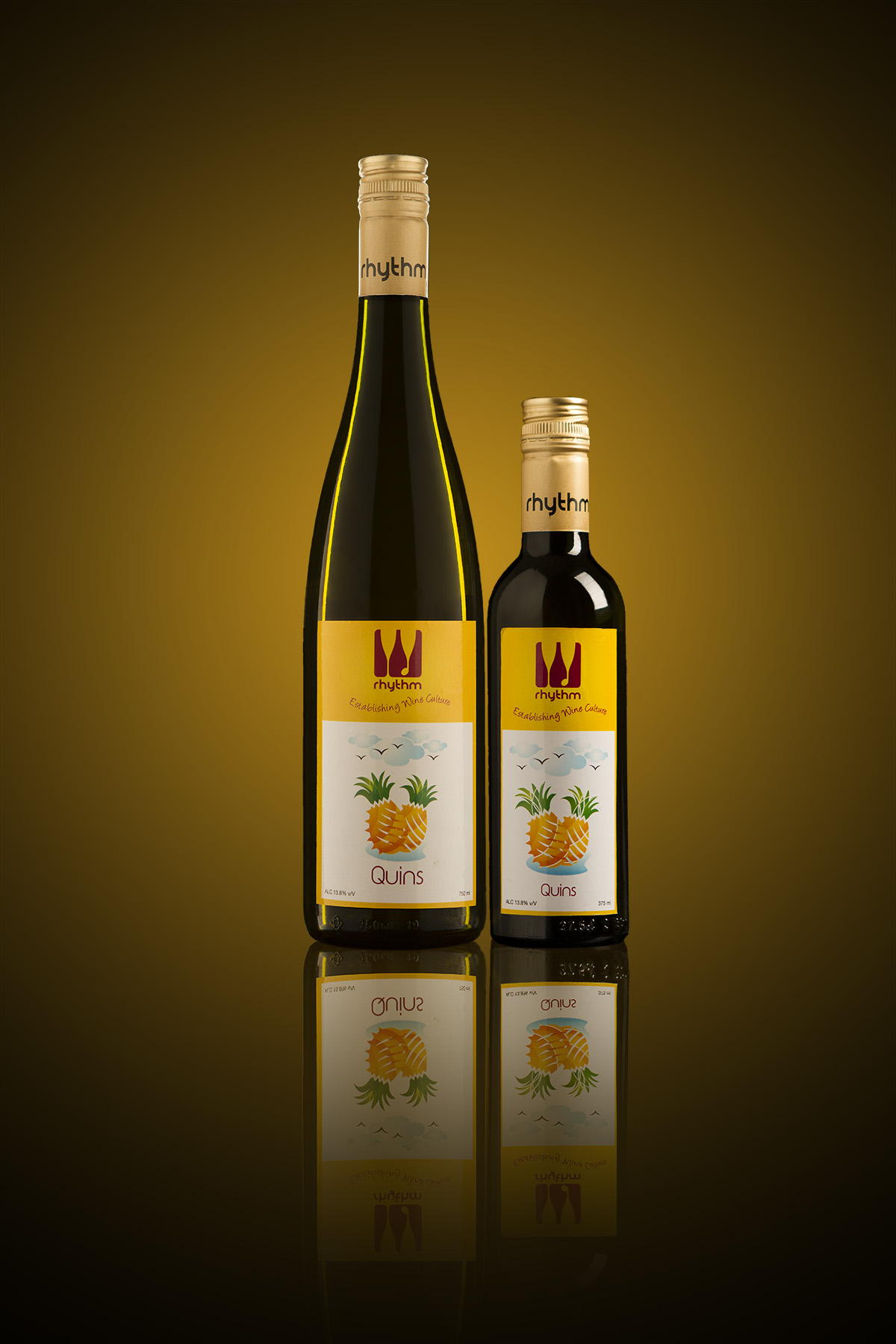Masemari is owned by Lalan Sarang, a well known Maharashtrian Big Screen and Theatre actress and is situated in the heart of Pune city and is a fine example of Malvani, Konkani and Goan cuisine with a comprehensive menu. An ode to the finest that coastal cuisine from Konkan and Goa has to offer!
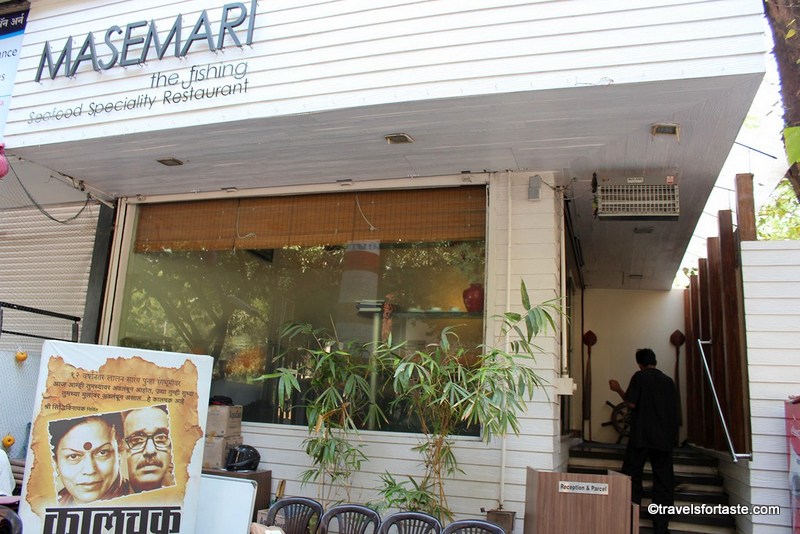
Western Indian Coastal cuisine and the way our family cooks seafood, involves the use of freshly grated coconut in abundance. We also don’t shy from using chillies lots of them red and green and freshly ground coriander chilli, ginger and garlic are used as a marinade for fish before frying. So if discerning foodies like us who know our coastal cuisine go out to eat similar food, the place better know what they are serving us! Especially if it involves travelling from one end of the city on a crisp winter morning and when we could easily have waltzed into Nisarg our all-time seafood speciality fav restaurant.
So are you ready to go on a visually stimulating coastal adventure where tall coconut palms sway in the tropical sun, the stunning western coast of India, home to the beautiful waters of Konkan? Join me on a virtual tour and an absolute treat for your senses, a tantalising deluge of spices …well then Strap on that seat belt for a ride on this fishing powerboat …no no … what the heck…just Dive right in 😉
We start the meal with Sol Kadhi (pronounced Soul Kadhee) made from freshly squeezed coconut milk and kokum (Mangosteen), said to have digestive properties and consumed as a palate cleanser between courses.
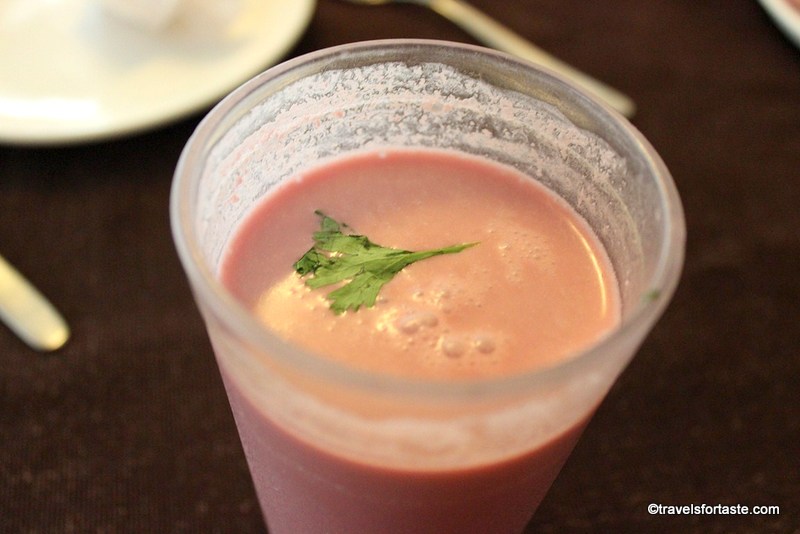
A prawn platter which is a mix of Rawa, Tawa, Koliwada and crispy prawns. (Rawa = semolina, Tawa =pan, Koli = fisherman, Wada= literally meaning a huge old-style Indian house like a bungalow, but Koliwada refers to a colony of Kolis or fishermen folk in India)
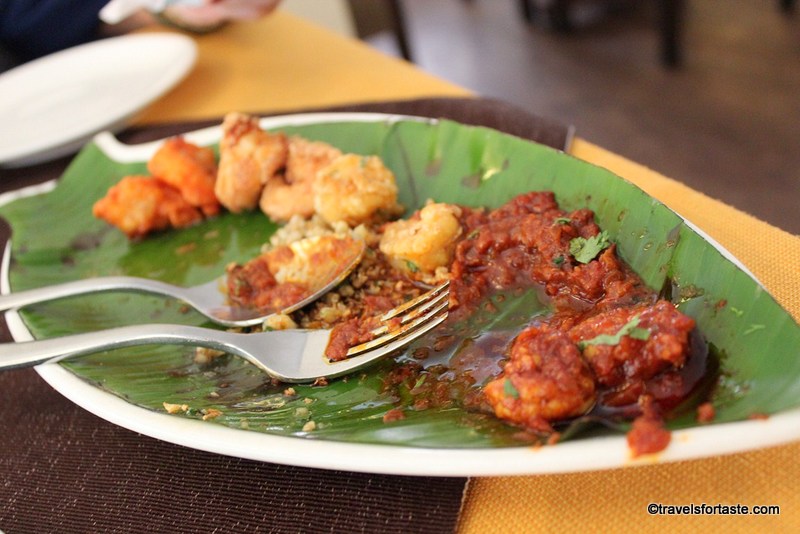
Bangda (Mackerel) Fry…I love anything served anything on a keli-paan (kela = banana ,paan = leaf)

Fish Pickle as a side
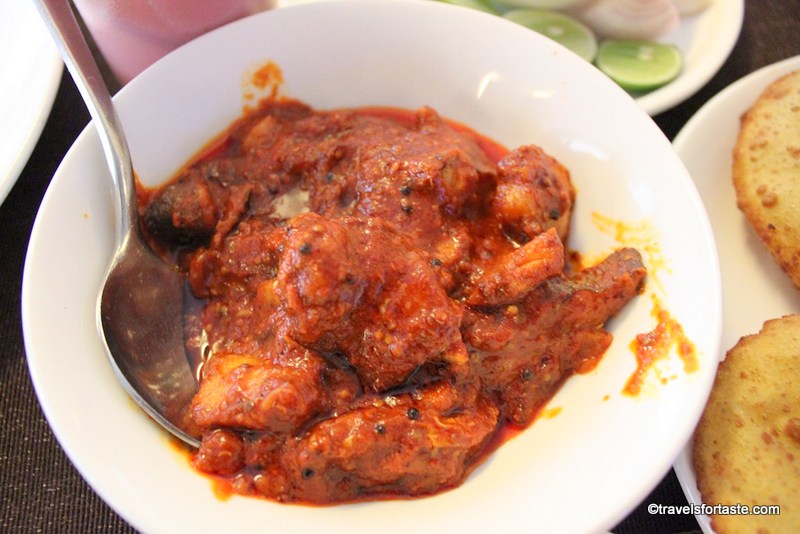
For mains, we ordered Tandool Bhakari or Indian bread made with rice flour (the white roti in the picture) , Wade – made from a mixture of 3-4 different flours and deep fried (the brown puffy puri), and Pomfret curry.
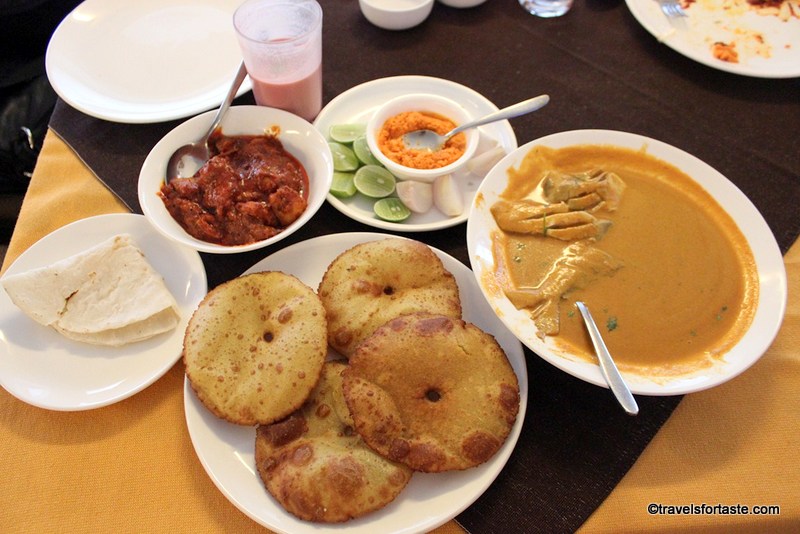
I loved the clean fresh white washed walls and huge artefacts that scream fish, fishing and fishing boats. The service is polite and quick and the fish is as fresh as the catch of the day, we went in hope of getting crabs – lots of them, alas… I live in the hope of a ”next time”
After this fine meal, I still dared to consume a gulab jamun and some more sol kadhi! I literally crawled to where Baba had parked the car and that afternoon oh boy ! Did I have a fab nap or what 🙂
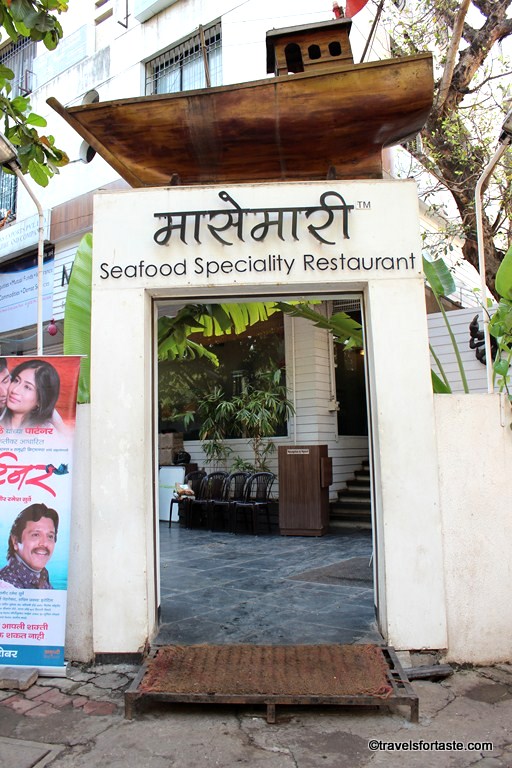
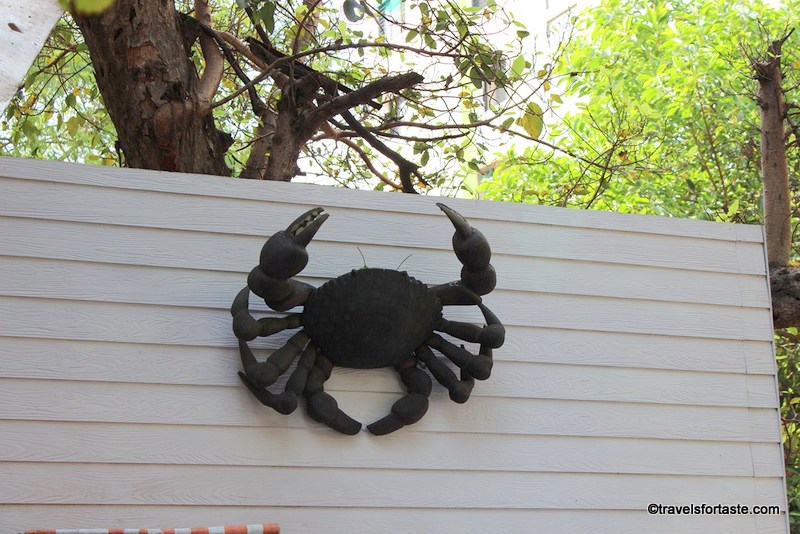
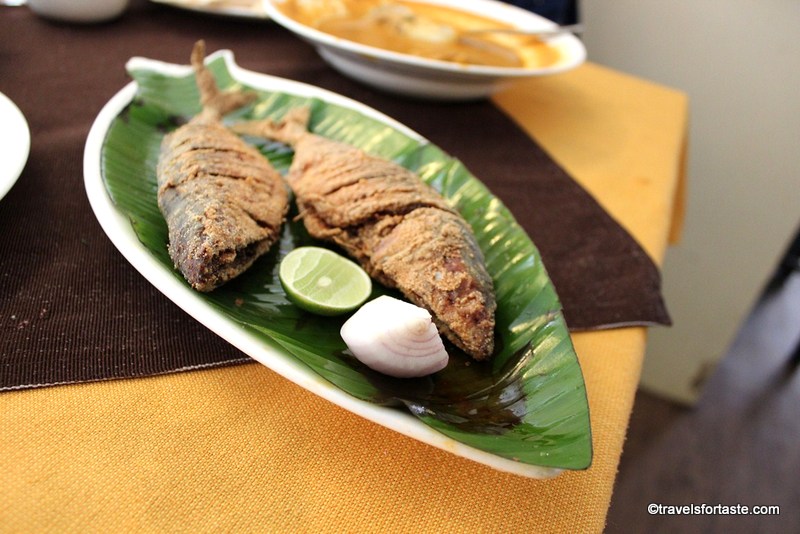
*Paid for in full by me. All opinions expressed and photographs used are, as always, my own. No monetary compensation was offered or provided for a positive review.
